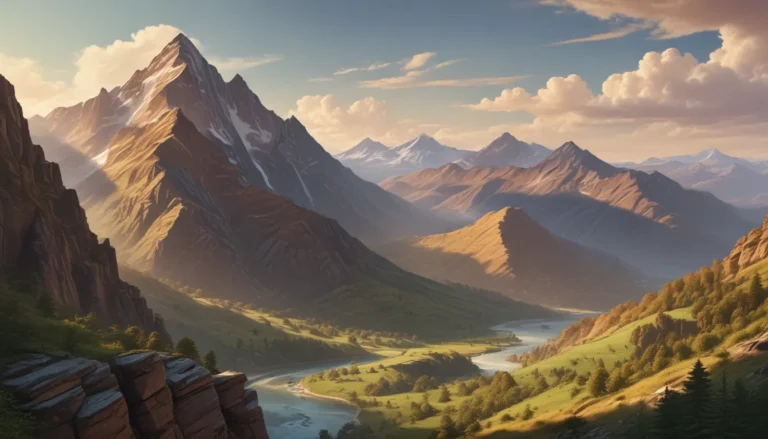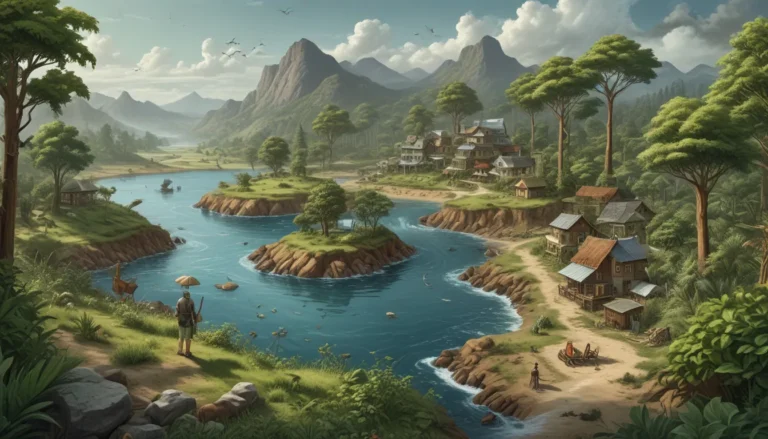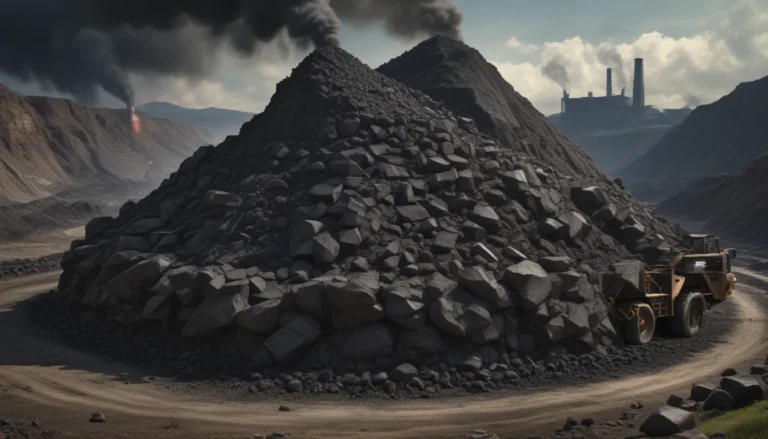A Note About Images: The images used in our articles are for illustration purposes only and may not exactly match the content. They are meant to engage readers, but the text should be relied upon for accurate information.
Welcome to the captivating world of terrestrial ecosystems, where the land comes alive with a diverse array of plants, animals, and microorganisms. These ecosystems play a crucial role in supporting life on Earth and are filled with wonders waiting to be discovered. In this article, we will delve into 20 intriguing facts about terrestrial ecosystems that will broaden your understanding of the natural world. From the Taiga to the Sahara Desert, get ready to uncover some remarkable facts that will leave you in awe of the incredible biodiversity and complexity of terrestrial ecosystems!
Key Takeaways:
- Terrestrial ecosystems, like the Taiga and Amazon Rainforest, are vital for Earth’s biodiversity and climate regulation. They face threats like deforestation and climate change, requiring urgent protection.
- From the Great Plains to the Sahara Desert, terrestrial ecosystems support diverse life forms and inspire artists. Preserving them is crucial for sustaining life and protecting Earth’s natural beauty.
Terrestrial Ecosystems: The Land of Diversity
Terrestrial ecosystems cover a significant portion of the Earth’s surface, ranging from vast deserts to lush rainforests. Influenced by factors such as climate, soil composition, and topography, these ecosystems provide habitats for a myriad of plant and animal species.
The largest terrestrial ecosystem is the Taiga, also known as the boreal forest. Spanning across Canada, Russia, and Alaska, the Taiga is characterized by coniferous forests, cold temperatures, and a variety of wildlife species, including bears, wolves, and moose.
The Amazon Rainforest: A Biodiversity Hotspot
The Amazon Rainforest is the world’s largest tropical rainforest, spanning over several South American countries. Renowned for its unparalleled biodiversity, this ecosystem plays a crucial role in regulating the Earth’s climate and serves as a vital carbon sink, absorbing carbon dioxide and releasing oxygen.
Terrestrial ecosystems provide numerous ecosystem services, including regulating climate, purifying air and water, providing food and raw materials, and supporting cultural and recreational activities. These services are vital for the well-being of both human populations and the natural environment.
Exploring Nature’s Marvels: From Savannas to Deserts
The Serengeti, a renowned terrestrial ecosystem in Africa, stretches across Tanzania and Kenya, known for its vast savannahs and the annual migration of millions of wildebeest and zebra. Home to iconic African predators such as lions, cheetahs, and leopards, the Serengeti showcases the intricate interconnectedness of species.
The Sahara Desert, the largest hot desert in the world, spans across North Africa. Despite its inhospitable conditions, the Sahara Desert is home to a variety of unique desert-adapted plants and animals, highlighting the resilience of life in extreme environments.
Challenges and Conservation Efforts
Terrestrial ecosystems play a crucial role in carbon cycling, with plants absorbing carbon dioxide through photosynthesis. Preserving and restoring these ecosystems is essential for mitigating climate change and preserving biodiversity.
The Polar Regions, including the Arctic and Antarctic, support a surprising diversity of life despite their extreme cold and harsh conditions. From polar bears to penguins and seals, these regions are home to species specially adapted to survive in freezing temperatures.
Preserving the Wonders of Terrestrial Ecosystems
Deforestation poses a significant threat to terrestrial ecosystems, leading to the loss of habitats and biodiversity worldwide. As human activities continue to encroach upon natural landscapes, preserving these ecosystems becomes a crucial task for ensuring the well-being of both human and environmental health.
Terrestrial ecosystems are not only sources of natural medicines but also support migratory bird populations during their annual migrations. These ecosystems serve as vital stopover points for millions of birds, providing them with food, water, and shelter during their journeys.
A Call to Action: Protecting Earth’s Natural Beauty
The Great Plains of North America, characterized by vast grasslands or prairies, support diverse plant and animal species, including bison, pronghorn, and prairie dogs. These unique ecosystems showcase the beauty and resilience of life on land.
Terrestrial ecosystems are essential for soil formation, contributing to the growth of fertile soils that support agriculture and plant growth. However, habitat fragmentation poses a threat to biodiversity, leading to the isolation of populations and increasing the risk of extinction for many species.
Appreciating the Beauty and Complexity of Terrestrial Ecosystems
The biodiversity of terrestrial ecosystems is immense, with over 400,000 plant species and millions of animal species calling these habitats home. From intricate food webs to ancient organisms like towering sequoias and bristlecone pines, terrestrial ecosystems are filled with marvels waiting to be explored.
Throughout history, terrestrial ecosystems have inspired artists, writers, and photographers with their beauty and diversity. From dense forests to vast deserts, these ecosystems continue to captivate creative minds and evoke awe and appreciation for the natural world.
Conclusion
Terrestrial ecosystems play a vital role in sustaining life on Earth, providing habitats for a wide array of plant and animal species. Understanding the complexities of these ecosystems is essential for effective conservation and sustainable management. By recognizing the interconnectedness of all living beings and the delicate balance they share, we can work towards preserving these ecosystems for future generations to enjoy and benefit from.
FAQs
- What are some examples of terrestrial ecosystems?
-
Terrestrial ecosystems include forests, grasslands, deserts, tundra, mountains, and wetlands.
-
How do terrestrial ecosystems contribute to biodiversity?
-
Terrestrial ecosystems provide habitat for a wide variety of plant and animal species, promoting biodiversity and supporting the intricate web of life on Earth.
-
What are the main threats to terrestrial ecosystems?
-
The main threats to terrestrial ecosystems include habitat loss, pollution, climate change, invasive species, and overexploitation of natural resources.
-
How do terrestrial ecosystems contribute to climate regulation?
-
Terrestrial ecosystems play a crucial role in regulating the Earth’s climate by sequestering carbon dioxide through photosynthesis and releasing oxygen. They also help to regulate temperatures and prevent soil erosion.
-
How can individuals contribute to the conservation of terrestrial ecosystems?
- Individuals can contribute to the conservation of terrestrial ecosystems by practicing sustainable land use, supporting local conservation efforts, minimizing their ecological footprint, and educating others about the importance of these ecosystems.
As we explore the wonders of terrestrial ecosystems, let us remember the importance of preserving these diverse environments for future generations. By working together to protect and conserve the beauty and complexity of terrestrial ecosystems, we can ensure a sustainable and thriving planet for all living beings. Terrestrial ecosystems are not just landscapes; they are vibrant and interconnected communities that deserve our admiration and protection. Let us continue to appreciate and safeguard the natural wonders of our world.






